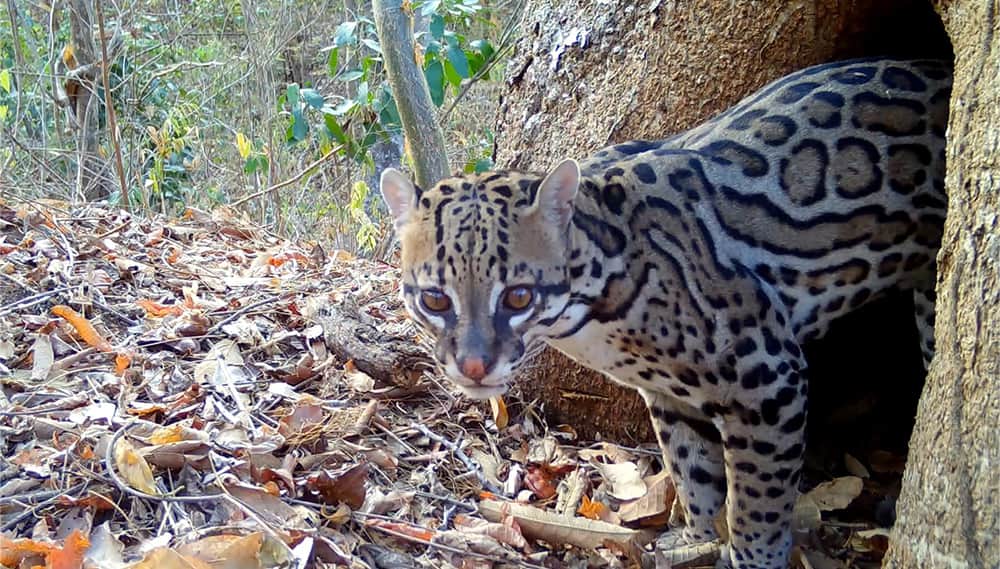It’s fair to say I’m captivated by camera traps. If you happen past me in a quiet moment and I have a far-off look in my eye, I’m probably thinking about an exceptionally good video that I’ve recorded lately or wondering what a particularly well-placed camera has waiting for me during my next field visit.
One of the things I ponder most frequently are new and interesting locations for my cameras. A few meters up in a fruiting tree usually yields interesting results. A log over a stream is often a homerun location. A few years ago, my camera trap daydreams had me considering where the nocturnal animals I was recording at night were going during the daylight hours. Two top conclusions were caves or tree hollows. By chance, the properties that I had been working on contained many more trees with holes in them than caves, so I started my investigation.
My original hypothesis was that a single animal would make the hole in the tree home, hiding out during the day, waiting for night to fall before venturing out into the world. As it turns out, for the vast majority of tree holes that I’ve investigated, this is not the case. Instead, these areas are usually visited by a wide array of species, most staying only a short time before moving on. I’ve recorded agoutis, coatis, opossums, tayras, skunks, iguanas, and motmots, among other species, all stopping by for quick visits.
Recently, last January to be exact, I found a tree hole that served a particularly interesting purpose. I discovered an ocelot bathroom. It’s an approximately two-foot-tall hole at the base of a towering Guanacaste tree.
Immediately upon the placement of the camera, I began recording a healthy male ocelot stopping by to do his business regularly, with a few days or a few weeks between visits. He stops by, sometimes during the day, sometimes a night, does his thing, and then goes on his merry way. A few months in, a smaller female ocelot joined the party, using the same ‘toilet.’
Several ocelots using the same area to leave their scent makes sense to me. They can send each other useful olfactory messages. Interestingly enough, the ocelots’ bathroom visits have sparked another kind of visit.
We’ll call this the “Ooh I like the way that stinks” visit. Multiple other species, including common opossums and white-nosed coatis, swing by the tree hole in the hours after an ocelot visit and get busy rubbing that stink all over themselves.
I’ve done a little research into why they’d be interested in doing that and it still seems to be a topic of debate. A leading theory is that they are covering their own scent with the smell of a larger predator and that may deter other predators from pursuing them.
The camera trap still has its lens pointed at the hole at this very moment, so I’ll continue to gather information, but in the meantime, you can take a look at the preliminary results of the ocelot bathroom investigation in the video below.
About the Author
Vincent Losasso, founder of Guanacaste Wildlife Monitoring, is a biologist who works with camera traps throughout Costa Rica. Learn more about his projects on facebook or instagram. You can also email him at: vincent@guanacastewildlifemonitoring.com






